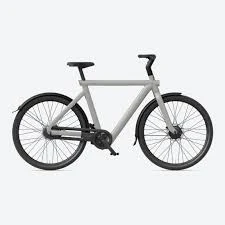
- Afrikaans
- Albanian
- Amharic
- Arabic
- Armenian
- Azerbaijani
- Basque
- Belarusian
- Bengali
- Bosnian
- Bulgarian
- Catalan
- Cebuano
- Corsican
- Croatian
- Czech
- Danish
- Dutch
- English
- Esperanto
- Estonian
- Finnish
- French
- Frisian
- Galician
- Georgian
- German
- Greek
- Gujarati
- Haitian Creole
- hausa
- hawaiian
- Hebrew
- Hindi
- Miao
- Hungarian
- Icelandic
- igbo
- Indonesian
- irish
- Italian
- Japanese
- Javanese
- Kannada
- kazakh
- Khmer
- Rwandese
- Korean
- Kurdish
- Kyrgyz
- Lao
- Latin
- Latvian
- Lithuanian
- Luxembourgish
- Macedonian
- Malgashi
- Malay
- Malayalam
- Maltese
- Maori
- Marathi
- Mongolian
- Myanmar
- Nepali
- Norwegian
- Norwegian
- Occitan
- Pashto
- Persian
- Polish
- Portuguese
- Punjabi
- Romanian
- Russian
- Samoan
- Scottish Gaelic
- Serbian
- Sesotho
- Shona
- Sindhi
- Sinhala
- Slovak
- Slovenian
- Somali
- Spanish
- Sundanese
- Swahili
- Swedish
- Tagalog
- Tajik
- Tamil
- Tatar
- Telugu
- Thai
- Turkish
- Turkmen
- Ukrainian
- Urdu
- Uighur
- Uzbek
- Vietnamese
- Welsh
- Bantu
- Yiddish
- Yoruba
- Zulu
Dec . 13, 2024 22:21 Back to list
ebike frames
The Evolution of E-Bike Frames A Comprehensive Overview
Electric bikes, or e-bikes, have gained immense popularity in recent years, transforming urban transportation and recreational riding alike. At the core of any bicycle, including e-bikes, is the frame—its structural foundation that not only supports the components but also dictates the safety, performance, and overall experience of riding. Understanding e-bike frames is crucial for both potential buyers and manufacturers in crafting the ultimate riding experience.
Types of E-Bike Frames
E-bike frames are diverse and designed with varying purposes in mind, including commuter, mountain, and cargo bikes. Each type of frame caters to the specific demands of its intended use.
1. Commuter Frames These frames are typically constructed for efficiency and comfort in urban settings. They prioritize a lightweight design for mobility and often include features such as fenders and mounts for racks. Materials such as aluminum and titanium are favored for their lightweight properties, while providing enough strength to handle daily use.
2. Mountain E-Bike Frames Built to endure rugged terrains, mountain e-bikes feature robust frames that can withstand shocks and impacts. Reinforced aluminum or carbon fiber is commonly used in this category, offering superior durability. The geometry of these frames is designed to enhance stability and control, critical for off-road conditions.
3. Cargo Frames As e-bikes increasingly serve as an alternative to cars for transporting goods, cargo e-bike frames have become prominent. These frames are often larger and built to carry significant weight, featuring additional support structures and attachment points for cargo carriers. The sturdiness of the frame is essential to ensure both safety and balance while riding with heavy loads.
Materials Used in E-Bike Frames
The material composition of e-bike frames plays a significant role in their functionality and performance. Below are the most common materials used in e-bike frame construction
- Aluminum Lightweight and resistant to corrosion, aluminum frames are prevalent in many e-bikes. They strike a balance between affordability and strength, making them a popular choice for various e-bike classifications.
- Carbon Fiber Known for its high strength-to-weight ratio, carbon fiber provides the ability to create extremely lightweight frames without sacrificing stiffness. Although more expensive, carbon fiber frames appeal to serious athletes and enthusiasts.
- Steel Traditional yet uncommonly found in modern e-bikes, steel offers exceptional durability and a smooth ride due to its natural flex. However, the weight and rust susceptibility make it less favorable for performance-oriented models.
ebike frames

Frame Geometry and Design
The design and geometry of an e-bike frame significantly affect rider comfort and handling. The two primary geometries are
1. Sport Geometry Designed for performance, this geometry often features a more aggressive riding position that can enhance speed and agility. It is suitable for riders looking to cover long distances or tackle challenging terrains.
2. Comfort Geometry Prioritizing ease and comfort, this geometry offers a more relaxed seating position, making it ideal for casual riders and commuters. It focuses on reducing strain on the back and wrists during rides.
Future Trends in E-Bike Frame Development
As technology evolves, so too does the design and construction of e-bike frames. Future trends include
- Integration of Technology Manufacturers are increasingly incorporating technology into frame designs, such as built-in lights, GPS trackers, and even theft prevention devices.
- Sustainability There is a growing emphasis on using sustainable materials and processes. Manufacturers are exploring recycled materials and eco-friendly production methods to create frames that minimize environmental impact.
- Customized Solutions As e-bikes cater to a wider array of riders and uses, custom frame designs are gaining popularity. Tailored frames that accommodate unique biomechanical needs can provide enhanced comfort and performance.
Conclusion
The evolution of e-bike frames has significantly impacted the world of cycling, offering riders more choices than ever before. As demand for e-bikes continues to rise, so will innovations in frame design and construction. Understanding the various aspects of e-bike frames—from materials and design to the implications of different geometries—can empower riders to make informed decisions about the technology that transforms cycling into a versatile and enjoyable mode of transportation. Whether for commuting, leisure, or rugged terrain adventure, the right e-bike frame is pivotal in shaping the riding experience.
-
The Ultimate Kids' Four-Wheeler Experience
NewsJul.09,2025
-
The Ultimate Guide to Mountain Bikes: Gear Up for Your Ride
NewsJul.09,2025
-
The New Age of Cycling: Electric Bikes for Every Rider
NewsJul.09,2025
-
The Best Kids Bicycles: Ride in Style and Safety
NewsJul.09,2025
-
The Best 3-Wheel Scooters for Kids: Fun, Safety, and Adventure
NewsJul.09,2025
-
Revolutionize Your Ride: Affordable Electric Bikes
NewsJul.09,2025
-
Finding the Perfect Mountain Bike for Every Rider
NewsJul.09,2025



